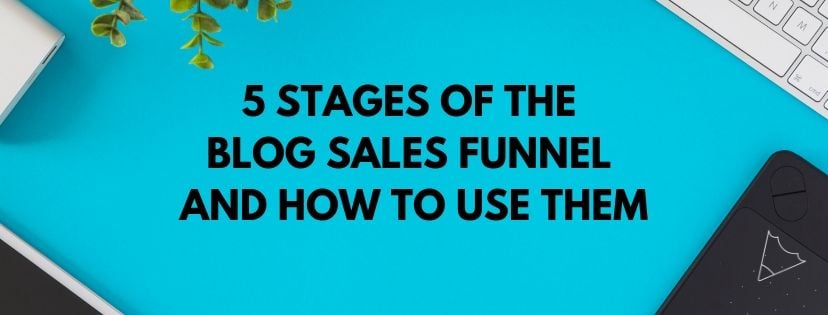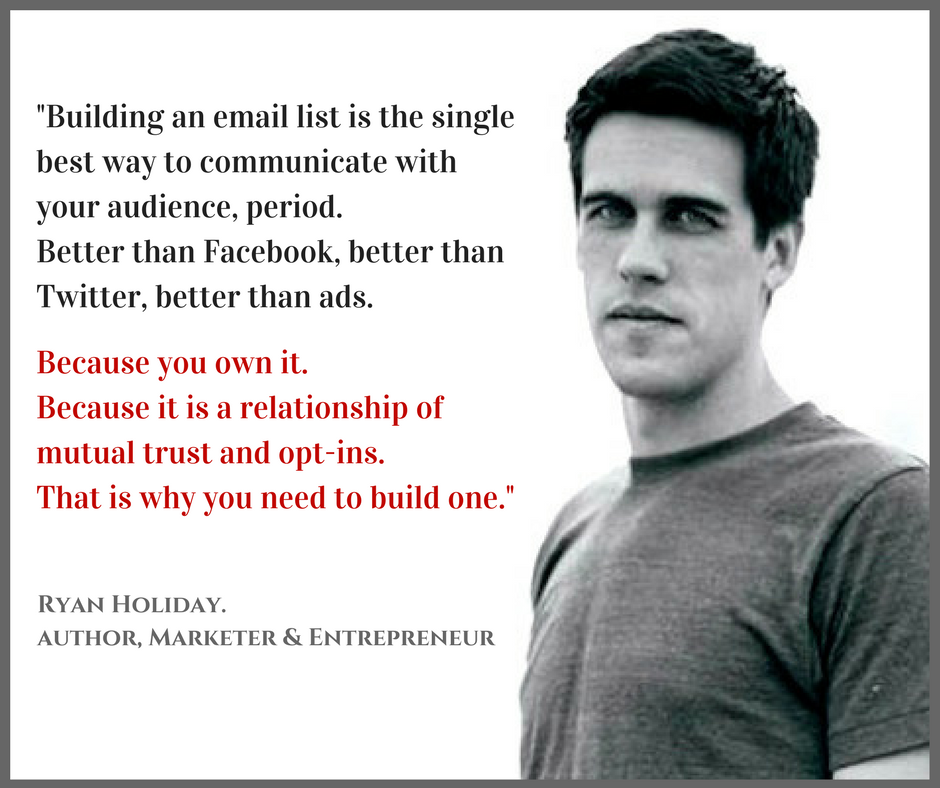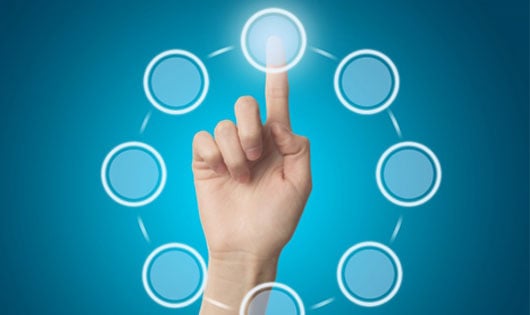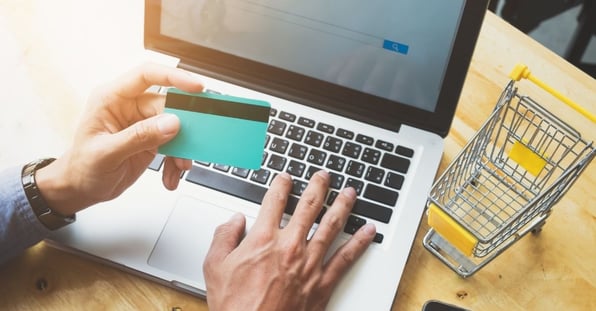
One of the biggest mistakes business owners make is trying to sell a product or service to a potential customer immediately after initial contact.
Often times, this will scare off a consumer, which is why playing the long game when it comes to selling these individuals is a must.
The only way to have success with this long-term strategy is understanding the importance of an efficient sales funnel.
In a recent study, nearly 18 percent of the businesses polled claimed that improving sales funnel efficiency was their main concern.
Developing a comprehensive model of your content marketing sales funnel is a bit challenging.
The only way to improve your sales funnel is by understanding the various moving parts it has.
Read below to find out more about the stages of a blog sales funnel and how to use them properly.
Stage 1: Establishing Awareness of Your Brand
Developing content for the top of your sales funnel can be challenging.
In the beginning, you need to assume that the consumers you are trying to reach know very little about your company.
This is why your main goal with this content should be to establish brand awareness and position yourself as an authority in your industry.
The key to accomplishing these goals is developing content with universal appeal.
You will also need to ensure the content is informative and engaging.
Establishing who your target demographic is can be helpful as you attempt to give your business a voice.
Having an online content strategy in place can help you keep both your blogs and your company voice consistent.
Unique Ways to Build Brand Awareness
If you are looking for a way to develop your brand and spread awareness, the first place you need to start is social media.
Before you begin posting on social media websites like Facebook, Twitter or Instagram, work on developing a backlog of content.
On these posts, you want to promote both your brand and your content.
Producing videos is also a great way to familiarize consumers with your brand.
These building videos should be both entertaining and informative.
You can also use paid marketing techniques like Facebook ads to create a buzz around your brand.
These ads allow you to target users based on factors like age, location and interests.
Stage 2: Building Your Email List
Casting a wide net is a good idea when trying to build your audience.
Once you have published content to raise awareness about your brand, the next thing you need to focus on is building your email list.
For years, business owners have used email marketing to increase the number of quality sales leads they receive.
Your goal with this type of content needs to be getting casual visitors to engage with your brand.
This engagement will come in the form of signing up for your email list.
The best way to accomplish this goal is by offering something free to the consumer.
This freebie can be anything from a webinar to a detailed training course.
Consumers love getting free items, which is why using this tactic is a great idea.
When done correctly, this type of content can help you build your email list significantly.
Actionable Tips For Building an Email List
If you are building your email list from scratch, developing a plan of attack is crucial.
The first thing you need to implement on all of your content is a call to action.
This part of the content will need to encourage readers to sign up for your email list.
You can also create slide-in or pop-up ads for the pages on your site.
When designing these elements, be sure to avoid making them too intrusive or annoying.
You can also pitch your email newsletter on social media.
The more traffic you can drive from social media to your website, the easier it will be to build a large email list.

Stage 3: Making Your Initial Offering
Once you have gained your audience’s attention with the first two stages of the sales funnel, you will be ready to make an attempt at making a one-time buyer a loyal lifetime customer.
While this may sound relatively difficult, it is much easier than you may assume.
The key to making this conversion is by making an initial offer that appeals to a buyer.
In most cases, this initial offer will have a lower price point attached to it.
You also need to make sure that this offer leaves the door open for further engagement.
For instance, if your business specializes in online marketing services, your initial offer should be for a discount on your managed account services.
The opportunity for further engagement exists because this service will probably need to be renewed on a regular basis.
Underpromise and Overdeliver
Starting a relationship with a new customer based on half-truths or outright lies is a horrible idea.
Some business owners promise a person whatever they want regardless of if they can provide it or not.
While this may seem like a great way to get a foot in the door, it will lead to big problems over time.
The best way to make your initial offering a success is by underpromising.
Doing this sets you up for an opportunity to over deliver in the future.
If a new customer sees you go above and beyond, it will help you keep them loyal.
Stage 4: Following Up is Important
Continuously nurturing the sales leads your website receives is imperative.
If a new customer feels like they are not receiving the attention they deserve, it is only a matter of time before they jump ship and seek out the help of your competition.
Developing content that is specifically tailored for certain parts of your sales funnel is essential.
Following up with an email that is geared towards where a person is in their sales journey can be very powerful.
Checking in and making sure your company is meeting the expectations a consumer has can help you find and solve problems in a hurry.
Essential Elements of Your Follow Up Email
Before you send out a follow up email to a consumer, establish what your objective is.
Once you have this information, be sure to open your email with context about why you are sending the message.
Once this information is established, you can lead in with your purpose for the email.
These reasons can range from seeing how your products or services performed for a customer to trying to upsell them on new products or services.
Crafting an interesting subject line is the last thing you need to do to send a successful follow up email.
Stage 5: Finding A Way to Get the Next Sell
The final stage of your blog sales funnel should be enticing existing customers to buy more products and services.
Consumers who have continuously engaged with your brand will be far more likely to make repeat purchases.
The key to keeping loyal consumers coming back for more is keeping them informed.
You will also need to focus heavily on being consistent with the level of service you provide customers.
Failing to meet a loyal customer’s expectations can be disastrous, which is why you need to routinely reach out to them to find out more about the experience they have had with your company.
Upselling Customers Effectively
The key to successfully upselling a new customer is knowing who they are and what they want.
Creating user personas is a great way to segment parts of your audience and hone in on what they need.
Creating a sense of urgency is also important when trying to successfully upsell a customer.
Often times, limited offers and time-sensitive discounts will attract a person’s attention and get them to respond.
Optimizing Your Sales Funnel is an Ongoing Process
Some business owners think a sales funnel is something they can set and forget.
In reality, updating your sales funnel routinely is the only way to keep it efficient and successful.
Go on and start building your funnel today, to reap the benefits of your blog eventually.









